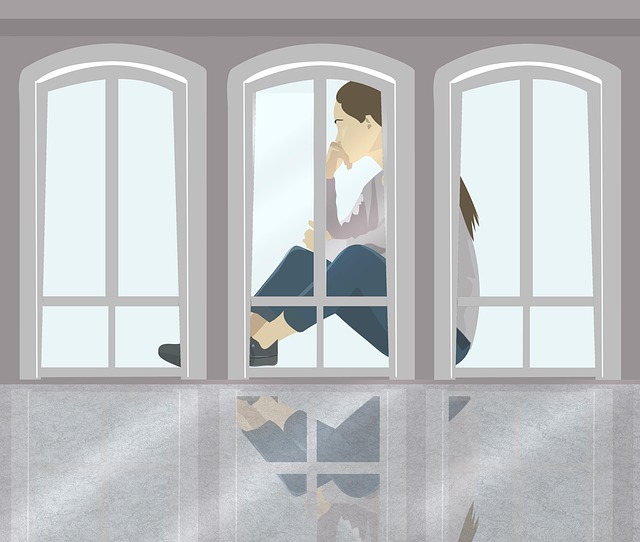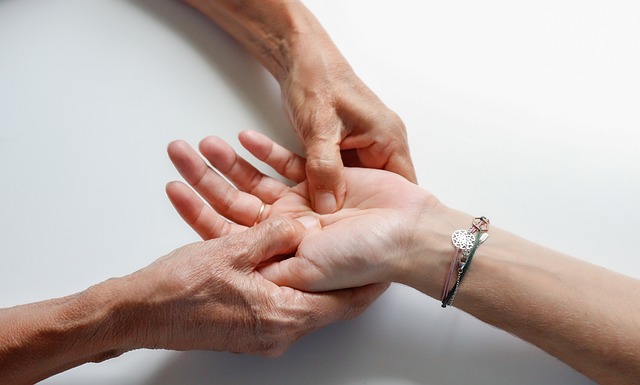Behavioral Activation Therapy (BAT) is a revolutionary depression treatment program that focuses on practical strategies to improve mood and well-being. Unlike traditional talk therapy, BAT encourages engaging in enjoyable activities, breaking the cycle of withdrawal often seen in depression. By collaborating with clients, setting structured goals, and replacing unhelpful behaviors, this therapy fosters accomplishment and enhances quality of life. Supported by research, BAT combines cognitive therapy with behavioral activation for a holistic approach, empowering individuals to manage symptoms and reclaim control over their lives through personalized interventions and support systems. Its future prospects include integration with CBT and remote delivery via technology, aiming for improved global mental health outcomes.
Behavioral Activation Therapy (BAT) is a game-changer in the world of depression treatment programs. This comprehensive approach focuses on increasing engaging activities and social interactions to combat the cycle of withdrawal and sadness often associated with depression. In this article, we’ll explore the science behind BAT, its key components, personalized approaches, integrated cognitive techniques, lifestyle modifications, support systems, evaluation methods, and real-world applications, providing a holistic overview for optimal depression recovery.
Understanding Behavioral Activation Therapy: A Comprehensive Overview

Behavioral activation therapy (BAT) is a highly effective depression treatment program that focuses on encouraging and structuring engaging activities to improve mood and overall well-being. Unlike traditional talk therapy, BAT emphasizes the practical application of coping strategies through daily routines and interactions. The core principle revolves around the idea that people with depression often experience a decrease in rewarding activities, leading to a cycle of withdrawal and negative symptoms.
By systematically activating individuals towards enjoyable and meaningful pursuits, BAT aims to break this cycle. This therapy involves collaborating with clients to identify and prioritize activities that can boost motivation and mood. Through structured scheduling and goal-setting, individuals learn to replace unhelpful behaviors with more adaptive ones, fostering a sense of accomplishment and improving their overall quality of life.
The Science Behind BAT: Neurobiology and Its Impact on Depression

Behavioral activation therapy (BAT) is grounded in a deep understanding of neurobiology, offering a unique approach to treating depression. This therapy focuses on identifying and modifying maladaptive behaviors that contribute to depressive symptoms, thereby reshaping neural pathways in the brain. By encouraging engaging in pleasurable activities and mastering new skills, BAT promotes the release of neurotransmitters like dopamine, often associated with pleasure and reward.
The impact of this process extends beyond immediate feelings of happiness; it can lead to long-lasting changes in brain structure. Research suggests that increased participation in rewarding activities can enhance neuroplasticity, the brain’s ability to form new connections. This mechanistic understanding underpins why BAT is considered an effective depression treatment program, offering a biological explanation for its positive outcomes and providing a compelling argument for its integration into mental health care.
Key Components of Behavioral Activation Therapy for Depression Treatment

Behavioral Activation Therapy (BAT) is a highly effective depression treatment program that focuses on helping individuals understand and change their relationship with activities, ultimately improving mood and overall well-being. The key components of BAT involve identifying and engaging in meaningful activities, enhancing motivation, and increasing pleasure and satisfaction in daily routines. By encouraging patients to participate in enjoyable and fulfilling tasks, BAT promotes a sense of purpose and accomplishment, which can significantly reduce depressive symptoms.
One of the core aspects is the concept of behavioral activation, where therapists assist clients in discovering and reconnecting with activities they once found rewarding. This involves exploring various interests, hobbies, and social interactions that align with personal values and goals. Through structured goal-setting and gradual exposure to these activities, individuals learn to replace negative thought patterns with positive ones, fostering a more balanced emotional state. Additionally, BAT emphasizes the importance of self-monitoring, allowing patients to track their moods, behaviors, and the impact of different activities on their overall mental health.
Personalized Approaches in Behavior Activation Therapy Programs

Behavior Activation Therapy (BAT) stands out for its personalized approaches within depression treatment programs. Unlike traditional therapies that might offer a one-size-fits-all strategy, BAT tailors interventions to an individual’s unique preferences, goals, and circumstances. This customization begins with a collaborative assessment where therapists work closely with clients to identify activities that have the potential to trigger positive emotions and promote engagement in enjoyable, meaningful behaviors. By doing so, BAT aims to rewire individuals’ relationships with their environment, shifting from avoidance or negative responses to more active, fulfilling participation.
The personalized nature of BAT extends to the development of tailored action plans. These plans are designed to be realistic and achievable, gradually encouraging clients to engage in activities that align with their interests and values. This gradual exposure, coupled with regular review and adjustment, fosters a sense of accomplishment and boosts motivation. As individuals successfully implement these personalized strategies, they gain insights into their own emotional responses, learn new coping skills, and ultimately, experience improvements in their depression symptoms through enhanced engagement with life.
Integrating Cognitive Techniques into Behavior Activation Therapy

Behavior Activation Therapy (BAT) stands out as an effective depression treatment program, integrating cognitive techniques to offer a holistic approach to mental well-being. By combining insights from cognitive therapy with behavioral activation strategies, BAT aims to break the cycle of depressive symptoms. It encourages individuals to engage in activities that naturally promote pleasure and satisfaction, thereby restoring motivation and energy levels.
Cognitive elements within BAT involve identifying and challenging negative thought patterns associated with depression. Through structured conversations led by a trained therapist, clients learn to recognize distorted thinking and replace it with more realistic, positive thoughts. This cognitive component empowers individuals to actively participate in their recovery, fostering a sense of control over their mental health.
Lifestyle Modifications for Optimal Depression Recovery with BAT

Behavioral activation therapy (BAT) emphasizes lifestyle modifications to help individuals overcome depression. This approach encourages patients to increase engaging activities and interactions with their environment, which can significantly improve mood and overall well-being. By making small but meaningful changes, such as adopting a regular exercise routine, connecting with loved ones, or pursuing hobbies, individuals can break free from negative thought patterns and develop healthier coping mechanisms.
Incorporating structured routines, setting achievable goals, and prioritizing activities that bring joy and satisfaction are key components of BAT. These lifestyle adjustments not only provide a sense of purpose but also foster a positive feedback loop where increased engagement leads to enhanced mood, which in turn motivates further participation in enjoyable activities. As a result, depression treatment programs based on BAT offer a practical and effective approach to supporting individuals in their journey towards recovery.
Role of Support Systems and Relapse Prevention in Behavioral Activation

Support systems play a pivotal role in Behavioral Activation Therapy (BAT), especially for individuals battling depression. Strong social connections can significantly enhance therapy outcomes by providing motivation, encouragement, and accountability. Family, friends, or support groups can help patients navigate challenges, celebrate achievements, and maintain focus on their goals. This network offers a safety net during difficult times, reducing the risk of relapse by fostering a sense of belonging and understanding.
Relapse prevention is another critical component integrated into BAT. It equips individuals with strategies to identify and manage high-risk situations that might trigger depressive episodes. By learning to anticipate potential triggers and develop effective coping mechanisms, patients gain control over their mental health. This proactive approach empowers them to make positive choices, reinforcing the behavioral changes achieved through therapy, and ultimately, supporting long-term recovery in depression treatment programs.
Measuring Success: Evaluation Methods for Behavioral Activation Therapy

Real-World Applications and Future Prospects of Depression Treatment Programs Using BAT

Behavioral activation therapy (BAT) has proven itself as a powerful tool in the arsenal of depression treatment programs. Its real-world applications span various settings, from clinical practices to community-based initiatives. By focusing on helping individuals identify and engage in activities that bring them pleasure or a sense of accomplishment, BAT offers a practical and evidence-based approach to managing depressive symptoms. This therapy encourages patients to challenge negative thought patterns and replace them with more adaptive behaviors, fostering a gradual yet significant improvement in mood and overall well-being.
Looking ahead, the future prospects for depression treatment programs utilizing BAT are promising. Ongoing research aims to refine the technique, making it even more accessible and effective. Integrating BAT with other therapeutic modalities, such as cognitive behavioral therapy (CBT), can enhance its impact. Furthermore, technological advancements, including mobile apps and online platforms, have the potential to deliver BAT interventions remotely, increasing accessibility for individuals who may face barriers to traditional in-person therapy. These innovations point towards a more inclusive and efficient approach to depression treatment programs, offering hope for improved mental health outcomes on a global scale.
